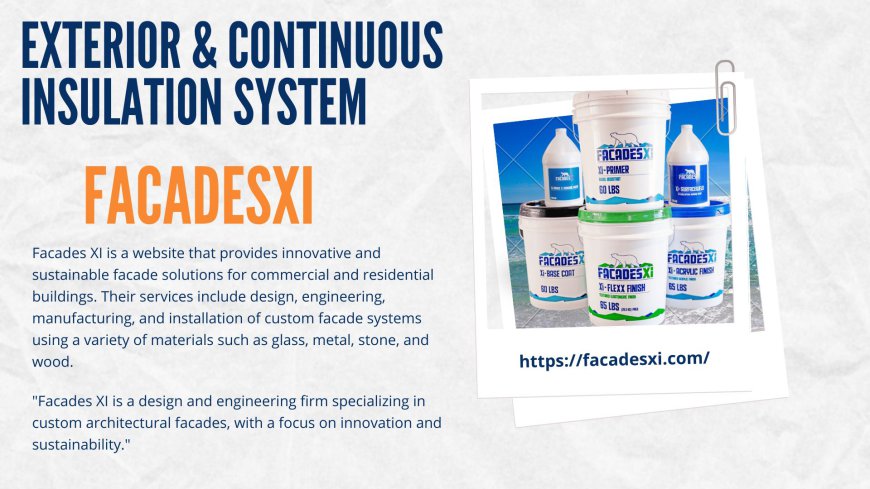Exterior Insulation System: A Modern Approach to Energy Efficiency and Comfort
In today’s world of rising energy costs and an increasing focus on sustainability, homeowners and builders are looking for innovative ways to improve energy efficiency in buildings. One such solution gaining popularity is the Exterior Insulation System (EIS). This blog explores what an exterior insulation system is, its benefits, components, and why it’s becoming a key player in modern construction.

What is an Exterior Insulation System?
An Exterior Insulation System refers to a construction method where insulating materials are applied to the exterior walls of a building. Unlike traditional insulation methods that are installed within walls or attics, this system focuses on creating a thermal envelope around the entire building, minimizing energy loss through the structure.
These systems are commonly used in both residential and commercial buildings, offering a seamless way to improve energy performance while also enhancing aesthetic appeal.
Components of an Exterior Insulation System
An effective exterior insulation system typically consists of the following layers:
- Substrate or Base Wall
The existing structure, which could be concrete, brick, wood, or other materials, serves as the base for the insulation system. - Adhesive or Mechanical Fasteners
These are used to attach the insulation panels securely to the substrate. - Insulation Boards
Insulation boards made of materials like expanded polystyrene (EPS), extruded polystyrene (XPS), or mineral wool form the core of the system. These boards reduce heat transfer and improve energy efficiency. - Reinforcement Layer
A layer of fiberglass mesh is embedded into a base coat, providing strength and resistance against cracking. - Finish Coat
A weather-resistant, decorative finish, often made of acrylic or silicone-based materials, is applied. This layer protects the insulation and adds to the building’s visual appeal.
Benefits of Exterior Insulation Systems
- Enhanced Energy Efficiency
Exterior insulation reduces thermal bridging, a common problem where heat escapes through structural elements like studs and beams. By addressing these weak points, EIS significantly lowers heating and cooling costs. - Improved Comfort
Buildings with EIS maintain more stable indoor temperatures, offering greater comfort for occupants throughout the year. - Increased Durability
The system protects the building envelope from weather-related damage, including moisture, temperature fluctuations, and UV rays, extending the life of the structure. - Aesthetic Flexibility
EIS allows for various finish options, giving architects and homeowners the freedom to choose colors and textures that match their vision. - Environmental Sustainability
By reducing energy consumption, exterior insulation systems contribute to lower greenhouse gas emissions, aligning with global efforts to combat climate change. - Cost-Effectiveness
While the upfront cost of EIS may be higher than traditional insulation methods, the long-term savings on energy bills and maintenance make it a smart investment.
Applications of Exterior Insulation Systems
- Residential Homes: To enhance energy efficiency in single-family and multi-family homes.
- Commercial Buildings: To meet stringent energy codes and create sustainable designs.
- Renovation Projects: Ideal for retrofitting older buildings to meet modern energy standards.
Things to Consider Before Installation
- Climate: The effectiveness of EIS may vary depending on the local climate. Ensure the system is designed to handle specific weather conditions.
- Moisture Management: Proper drainage and vapor barriers are crucial to prevent water infiltration.
- Professional Installation: Hiring skilled professionals ensures the system is installed correctly, maximizing its benefits.
Conclusion
The Exterior Insulation System is a game-changer in the construction industry, offering a holistic solution to improve energy efficiency, comfort, and aesthetics. Whether you’re constructing a new building or renovating an old one, investing in EIS can lead to significant savings and a smaller carbon footprint. As energy codes become stricter, exterior insulation systems will undoubtedly play a central role in shaping sustainable architecture for the future.
So, why wait? Upgrade to an exterior insulation system today and enjoy the benefits of a smarter, greener, and more comfortable building!

